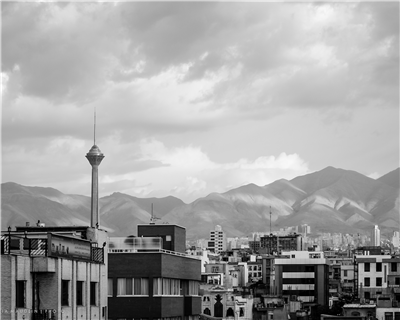The opportunities and challenges of Iran's post-sanctions era
Iran suffered massively from the economic sanctions imposed by the United States and the European Union. The Iranian oil and gas industry was especially badly impacted, with oil revenues collapsing from approximately $118 billion dollars (2011) to around $42 billion (in 2013).

Iran suffered massively from the economic sanctions imposed by the United States and the European Union. The Iranian oil and gas industry was especially badly impacted, with oil revenues collapsing from approximately $118 billion dollars (2011) to around $42 billion (in 2013).
For more than 10 years of doubts and long negotiations about the non-military purpose of the Iranian nuclear programme, the UN Security Council (USA, Russia, China, France, Great Britain) as well as Germany, Iran and the EU, agreed in the summer of 2015 a comprehensive plan to end the dispute, and signed the so-called Joint Comprehensive Plan of Action (“JCPOA”).
The aim is to prevent the possible construction of an Iranian nuclear bomb and to ensure the exclusively peaceful use of nuclear energy in Iran. The Islamic Republic had to reduce their centrifuges to around 6000 and to reduce the stocks of enriched uranium drastically.
In January 2016, the International Atomic Energy Agency (IAEA) confirmed that Iran has taken first steps to dismantle their nuclear programme. This automatically led to the so-called “implementation day”. In a consequence several sanction relaxations took place, as agreed in EU resolutions of 2015. However, the sanctions are only partially lifted. A series of sanctions, including for example the sale of heavy weapons, still remains in place for a few years.
While the EU sanctions against Iran were eased, the US sanctions must still be observed. Those trade restrictions for US persons or non-US persons who are “owned or controlled by a US person” continue to exist – with a few exceptions.
When it appeared that after a long period of negotiations the sanctions would be eased, many exporters intensified their sales efforts in order to get a head start with important contracts. Without sanctions, Iran will once again have access to many industrial goods and freely be able to sell oil on the world market. Many Western countries are waiting to be able to do business with the Islamic Republic again.
Following the European Union’s ease of their Iran-sanctions earlier this year, several ECAs have reactivated their cover policy towards Iran. At the same time, banks have started their business again. This began with Iran’s connection to SWIFT and continued with trade finance products, such as simple remittances, document collections, letters of guarantee (LGs) and letters of credit (LCs). It has to be mentioned, that there are big policy differences between the banks. In the past some banks were severely punished and thus are reluctant to do any business in Iran at all. Others more actively promote their delivery capability.
The most significant barrier continues to be the remaining US sanctions. This leads to a certain dilemma for banks to follow the European rules on the one hand, while they also have to obey to the US rules. This can somehow be compared to the Helms-Burton act vs. several EU resolutions that doing business in Cuba made difficult. But that is another topic.
With the above mentioned trade finance products the banks do not yet satisfy exporters’ needs. What is needed is taking Iran risk. That would mean confirming LCs and to provide ECA-covered loans. So far, no banks have established significant credit lines for Iran. As long as no lines are established, no ECA facilities would be feasible.
Initial transactions would be limited probably to country risk assets, meaning a state guarantee to be issued by the Ministry of Finance would be necessary. In such a case the MoF could divert transactions to specific industries. Most likely that will be infrastructure.
Meanwhile some third-country banks open LCs in favor of EU-banks, which they in turn can confirm. However, such transactions must comply strictly to the requirements that still remain, since even the EU sanctions have not been lifted completely.
One of the biggest fears is still the fact that the so-called snap back clause could enter into force. This clause has been included in order to reactivate possible sanctions, if Iran would disregard for example restrictions with regard to their nuclear program.
An eight member panel (called the Joint Commission) has been created, to serve as a dispute resolution mechanism. The members of the panel are the five veto-wielding members of the Security Council, plus Germany, Iran and the European Union. If a majority (5) finds Iran to be cheating, the issue is referred to the Security Council. No single country has a veto. The language of the nuclear deal says that the vote in the Security Council would not be to reimpose sanctions. Rather, the Security Council must decide whether or not to continue lifting the sanctions. And if they fail to do so, the old sanctions would automatically resume after 30 days (snap back).
This framing obviates the prospect of a Russian veto, and it all but assures that if the Western countries believe that Iran is cheating, sanctions will automatically be reimposed. Such a snap back provision could last for 10 years. It is understood that the snap back would not affect contracts agreed during the period where no sanctions applied.
It also has to be noted that due to a decade of financial and economic isolation, the Iranian banking system also suffered immensely. Besides fundamental economic challenges, basic banking problems – such as corruption, a “high” percentage of nonperforming loans, weak central bank liquidity and illiquidity of banks, banks’ inability to follow modern standards for financial disclosure, taxation, capital requirements and due diligence – have still to be resolved. Not surprisingly, foreign banks are not rushing into Iranian markets at the rate many expected.
Michael Sobl
Trade & Export Finance - DZ Bank





